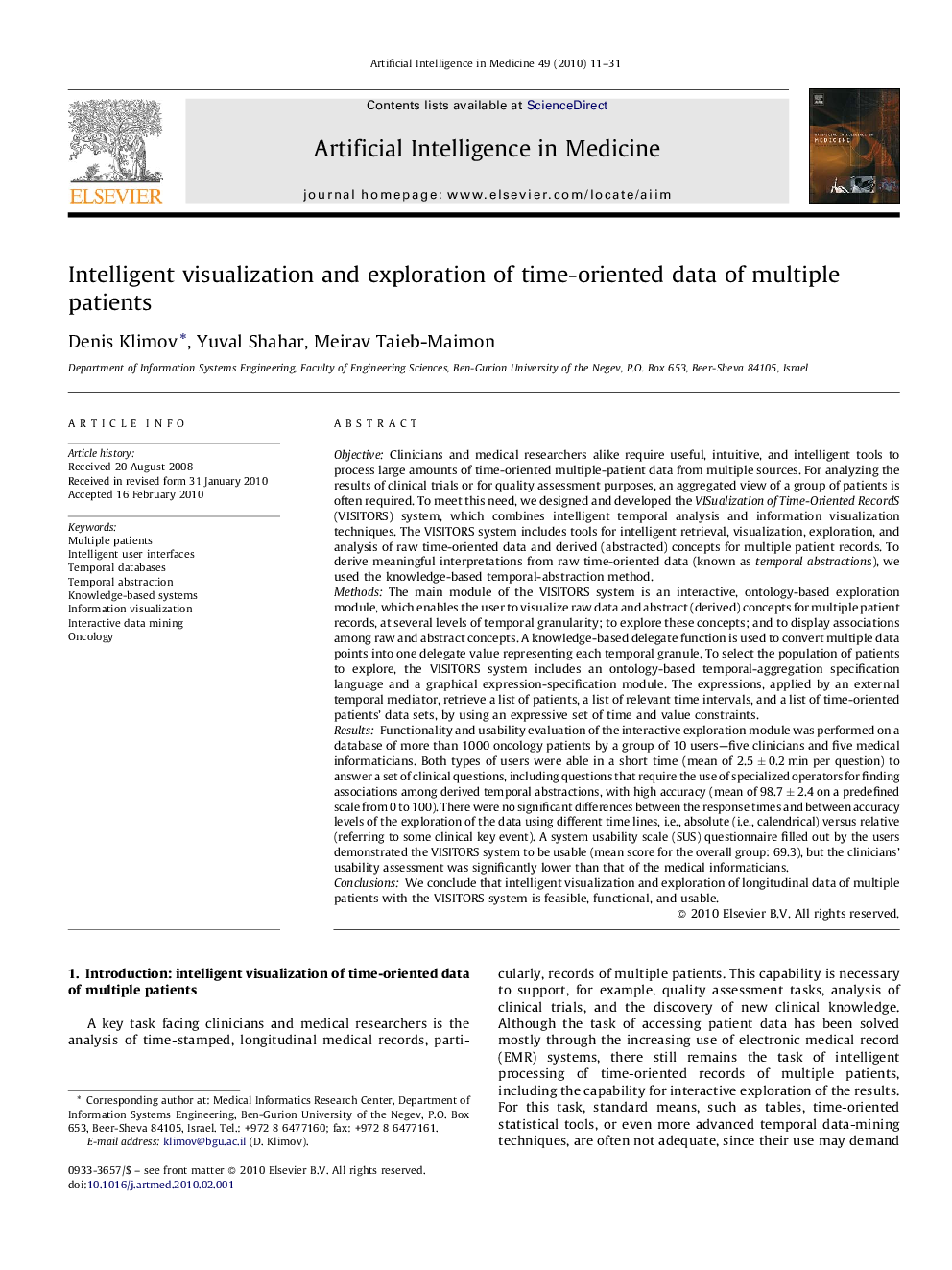| کد مقاله | کد نشریه | سال انتشار | مقاله انگلیسی | نسخه تمام متن |
|---|---|---|---|---|
| 377863 | 658842 | 2010 | 21 صفحه PDF | دانلود رایگان |

ObjectiveClinicians and medical researchers alike require useful, intuitive, and intelligent tools to process large amounts of time-oriented multiple-patient data from multiple sources. For analyzing the results of clinical trials or for quality assessment purposes, an aggregated view of a group of patients is often required. To meet this need, we designed and developed the VISualizatIon of Time-Oriented RecordS (VISITORS) system, which combines intelligent temporal analysis and information visualization techniques. The VISITORS system includes tools for intelligent retrieval, visualization, exploration, and analysis of raw time-oriented data and derived (abstracted) concepts for multiple patient records. To derive meaningful interpretations from raw time-oriented data (known as temporal abstractions), we used the knowledge-based temporal-abstraction method.MethodsThe main module of the VISITORS system is an interactive, ontology-based exploration module, which enables the user to visualize raw data and abstract (derived) concepts for multiple patient records, at several levels of temporal granularity; to explore these concepts; and to display associations among raw and abstract concepts. A knowledge-based delegate function is used to convert multiple data points into one delegate value representing each temporal granule. To select the population of patients to explore, the VISITORS system includes an ontology-based temporal-aggregation specification language and a graphical expression-specification module. The expressions, applied by an external temporal mediator, retrieve a list of patients, a list of relevant time intervals, and a list of time-oriented patients’ data sets, by using an expressive set of time and value constraints.ResultsFunctionality and usability evaluation of the interactive exploration module was performed on a database of more than 1000 oncology patients by a group of 10 users—five clinicians and five medical informaticians. Both types of users were able in a short time (mean of 2.5 ± 0.2 min per question) to answer a set of clinical questions, including questions that require the use of specialized operators for finding associations among derived temporal abstractions, with high accuracy (mean of 98.7 ± 2.4 on a predefined scale from 0 to 100). There were no significant differences between the response times and between accuracy levels of the exploration of the data using different time lines, i.e., absolute (i.e., calendrical) versus relative (referring to some clinical key event). A system usability scale (SUS) questionnaire filled out by the users demonstrated the VISITORS system to be usable (mean score for the overall group: 69.3), but the clinicians’ usability assessment was significantly lower than that of the medical informaticians.ConclusionsWe conclude that intelligent visualization and exploration of longitudinal data of multiple patients with the VISITORS system is feasible, functional, and usable.
Journal: Artificial Intelligence in Medicine - Volume 49, Issue 1, May 2010, Pages 11–31